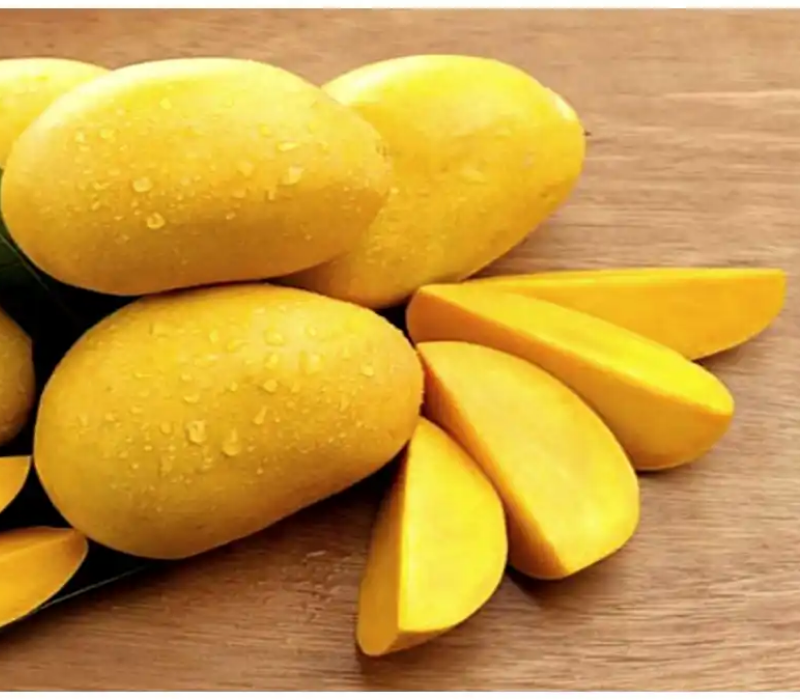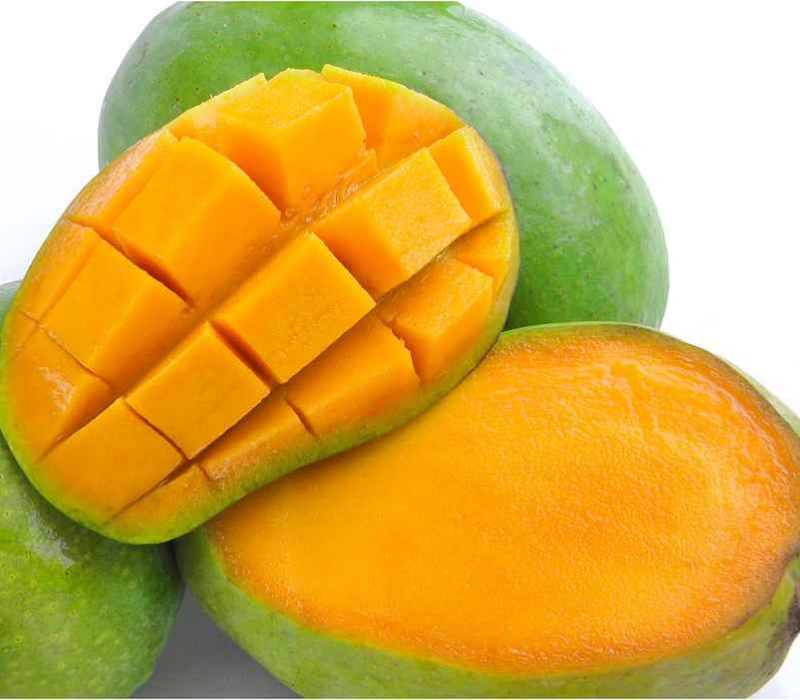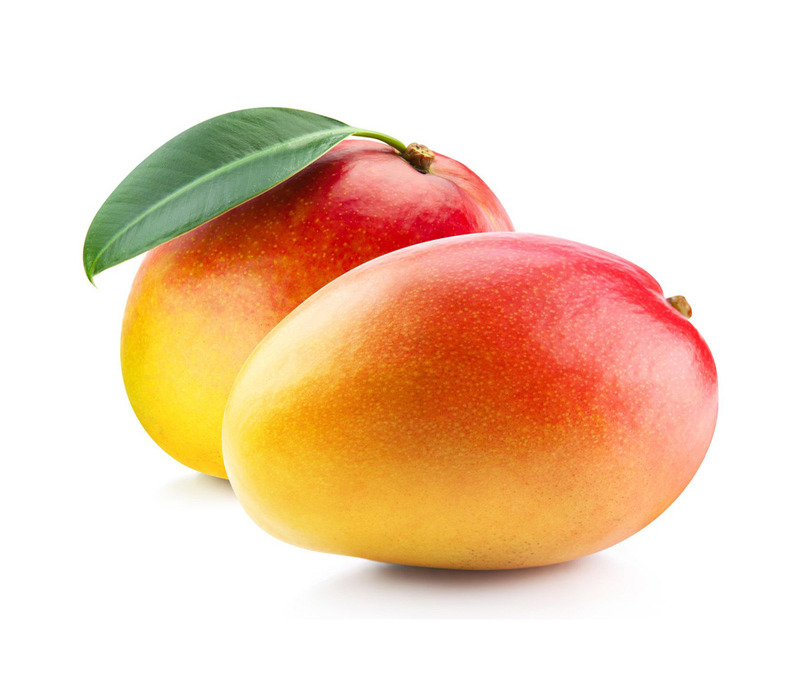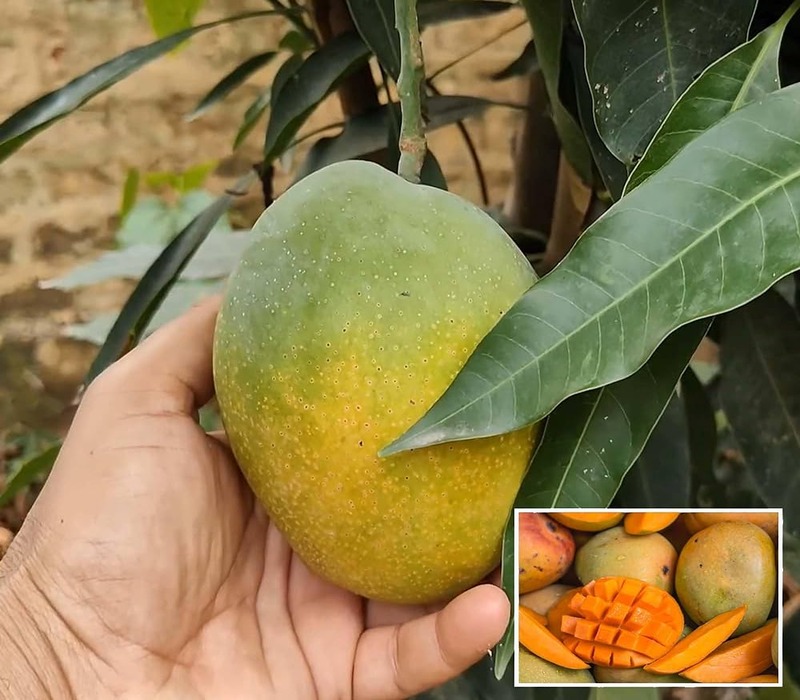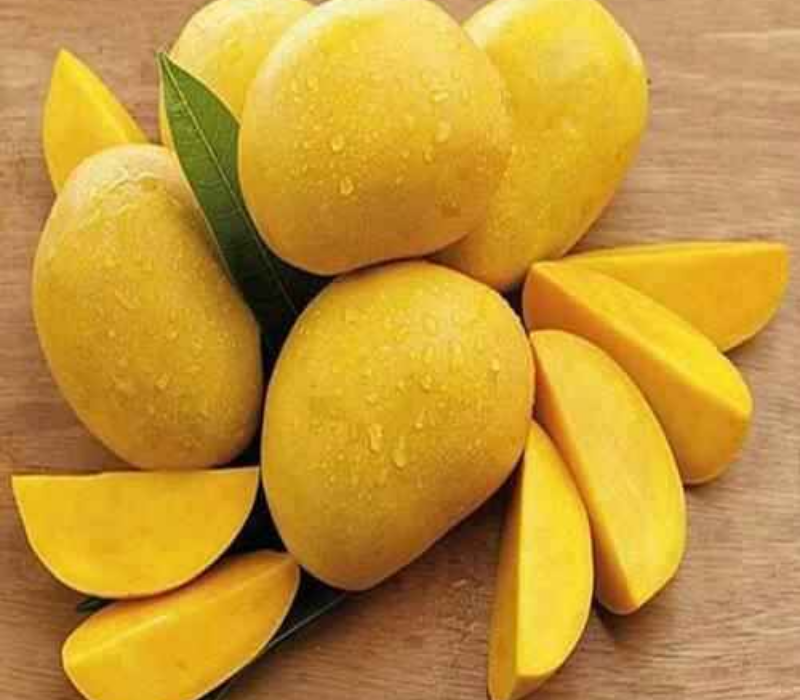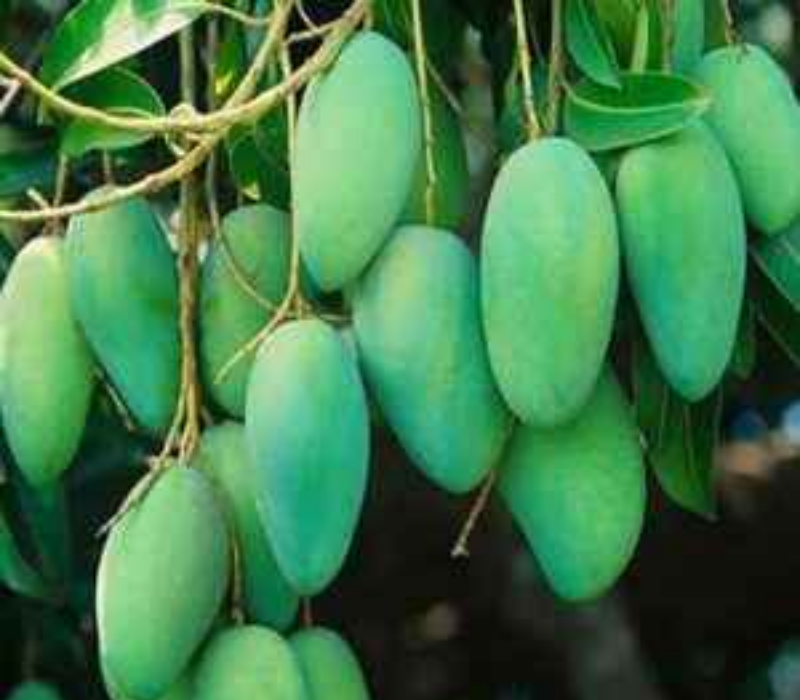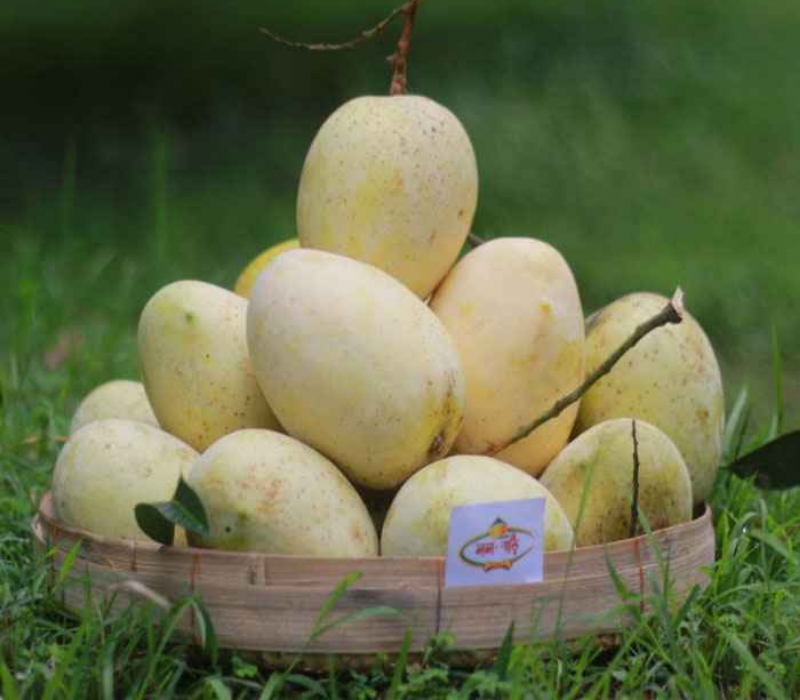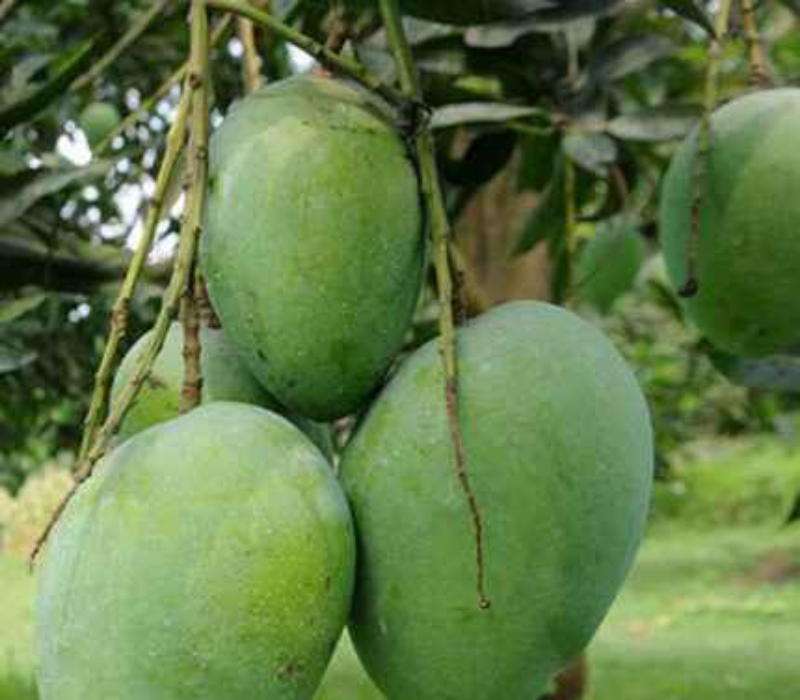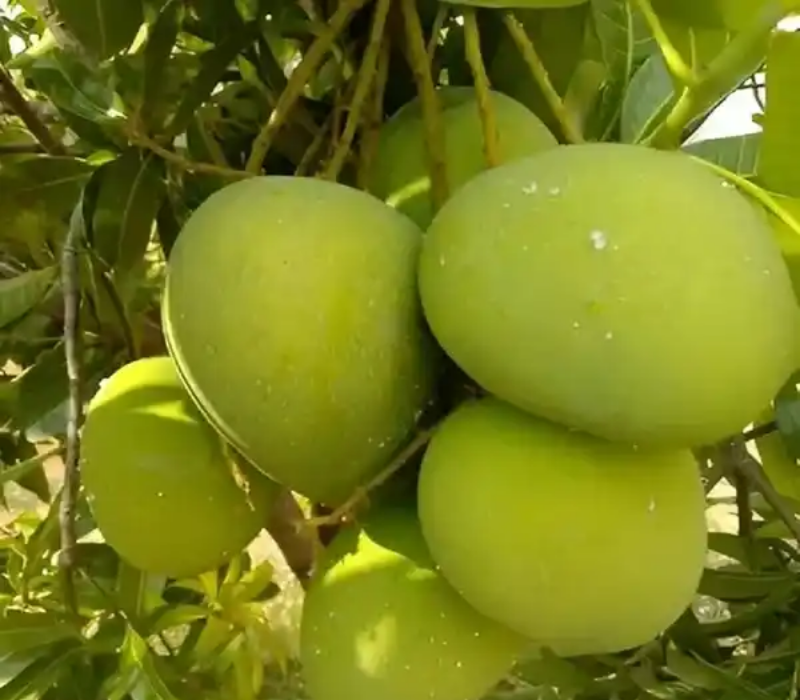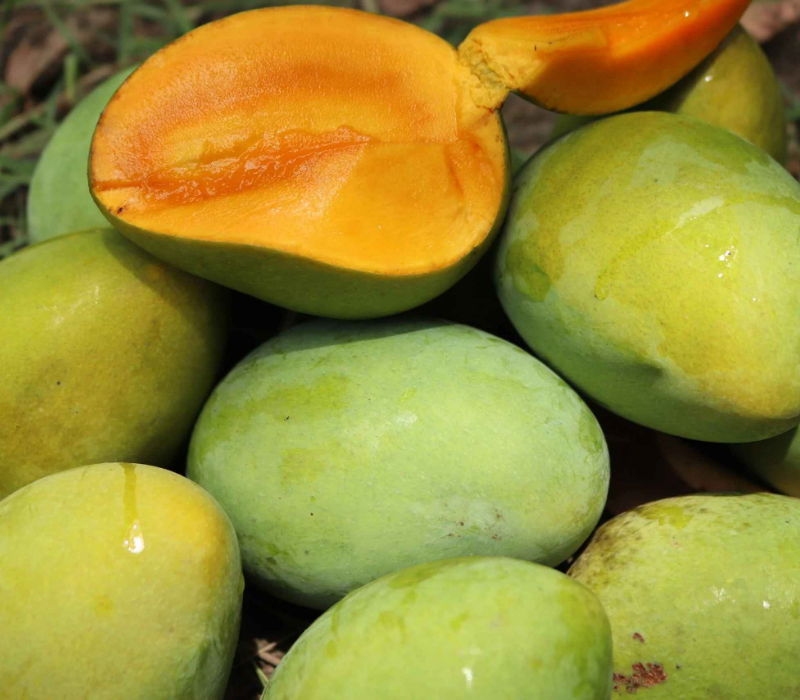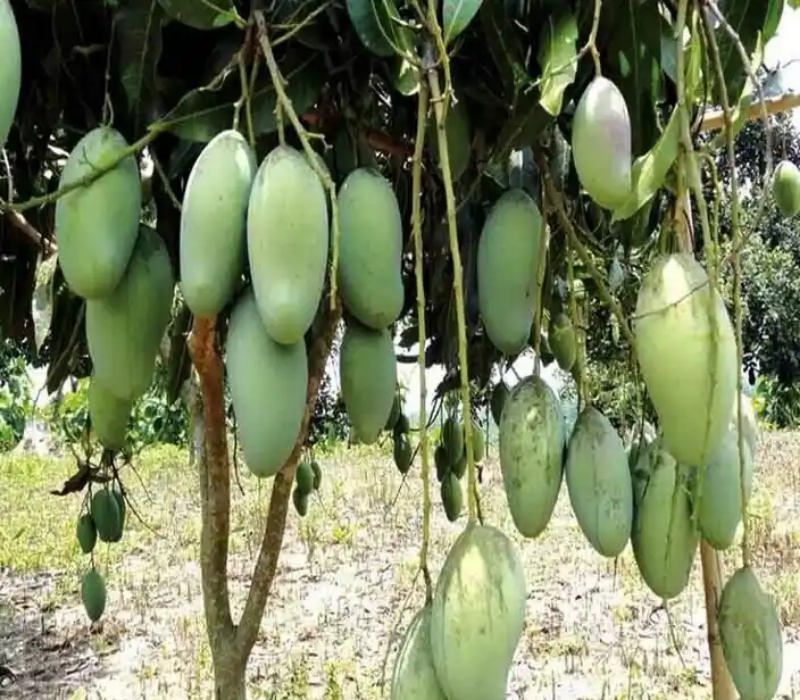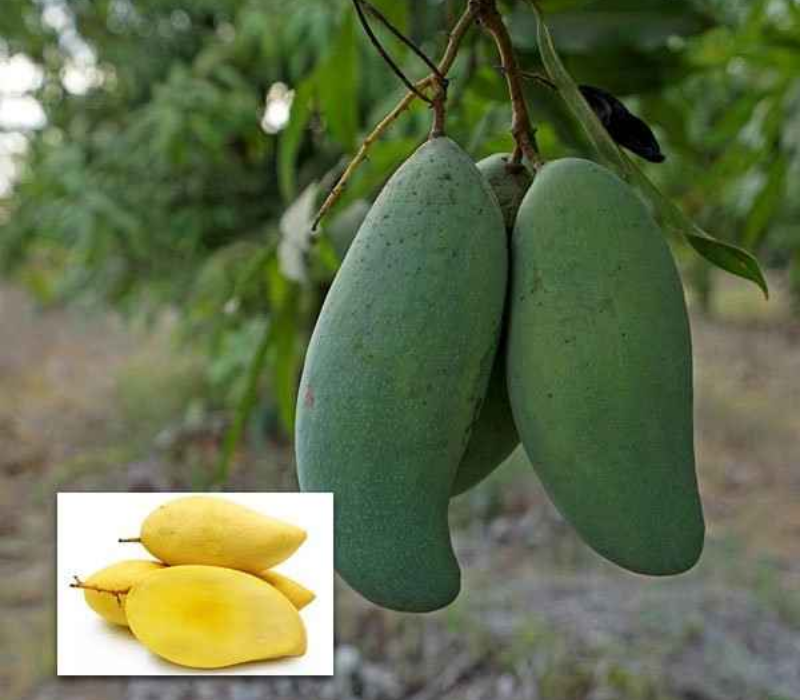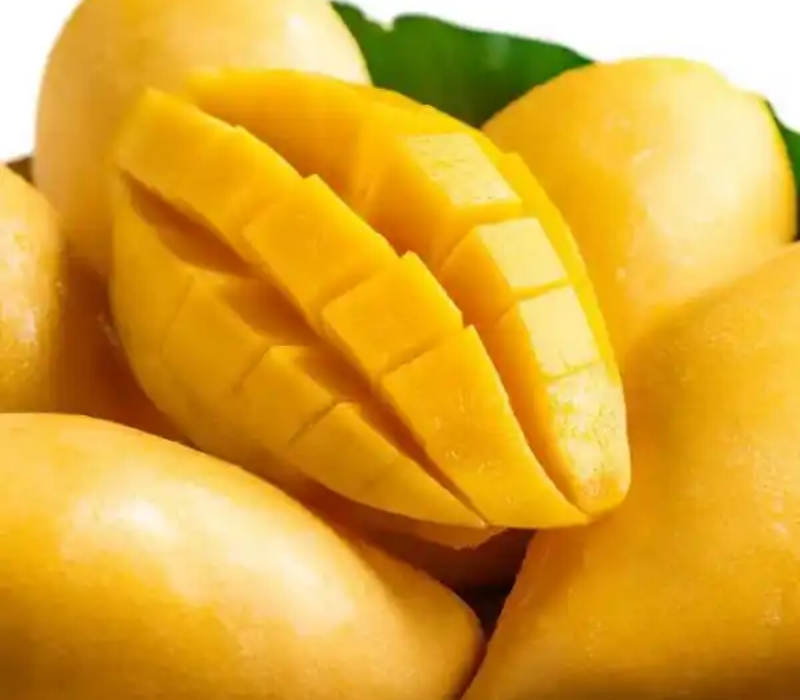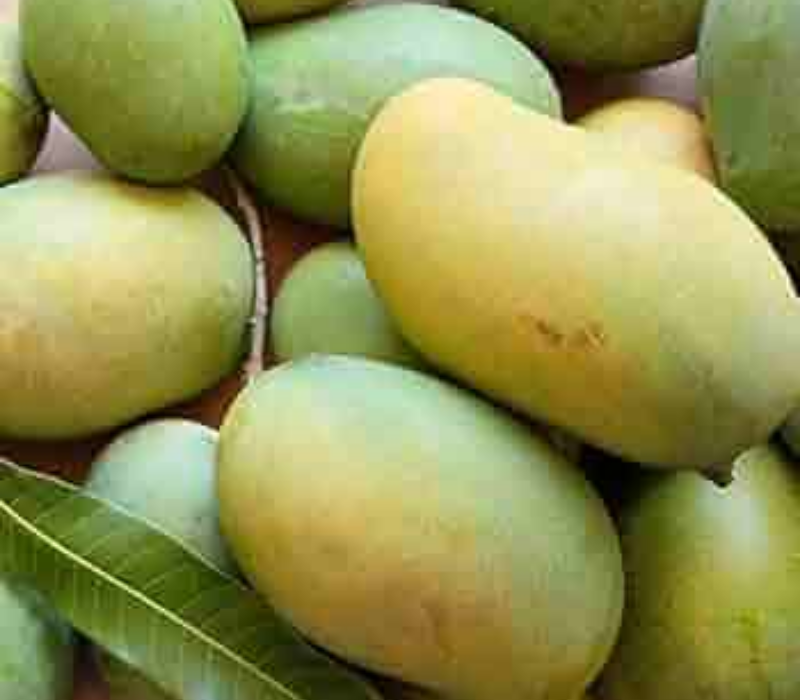Sort by
Kohitur Mango
🥭 Kohitur Mango Description :
Kohitur Mango is a rare and royal mango variety from Murshidabad, West Bengal, known for its exceptional sweetness, buttery, fiberless flesh, and intense aroma. Once grown exclusively for Mughal royalty, it is now cultivated in very limited numbers, making it one of the most exclusive and expensive mangoes in the world. With a high Brix level (23–26°) and a short shelf life, Kohitur is often considered a heritage delicacy, prized more for its cultural and historical value than commercial use.
🌟 Key Features:
-
Origin: Murshidabad, West Bengal, India
-
Type: Ultra-rare heritage mango
-
Fruit Shape: Oval to slightly oblong
-
Skin: Thin, delicate, pale yellow to golden
-
Flesh: Rich yellow, buttery, smooth
-
Fiber Content: Absolutely fiberless – melt-in-mouth texture
-
Aroma: Strongly aromatic, with floral and musky notes
-
Taste Profile: Incredibly sweet with a royal, perfumed flavor – often described as “mango nectar”
-
Brix (Sweetness): Around 23–26° Brix – extremely high
-
Seed: Small and thin, often monoembryonic
-
Weight: 200–300 grams per fruit
-
Shelf Life: Very short – highly perishable, usually consumed within 2–3 days of ripening
-
Harvest Season: June to early July (short window)
Sensation Mango
Sensation Mango
Sensation Mango is a vibrant and tropical flavor that captures the juicy sweetness and tang of ripe mangoes. With a rich golden-orange color and a smooth, honey-like sweetness, it delivers a refreshing, exotic taste that’s both sweet and slightly tangy. Perfect for beverages, desserts, and more, Sensation Mango offers a luscious, indulgent experience reminiscent of sun-ripened mangoes.
- Color:
- The color of a Sensation Mango product typically ranges from a rich, deep yellow to golden orange. This vibrant color is similar to that of a ripe mango, which is characterized by its bright yellow flesh and orange hue. Depending on the product and formulation, the color may vary slightly, especially if additional ingredients or colorants are used. However, the core color remains an inviting, sun-kissed shade that reflects the ripe, tropical essence of mango.
- Sweetness:
- Mangoes themselves are known for their sweet and tangy profile, and the Sensation Mango flavor aims to replicate that with a moderate to high sweetness level. The sweetness can be described as a natural, honey-like quality that is not overly sugary but still indulgent and satisfying. In some formulations (like drinks or desserts), additional sugar or sweeteners might be added to enhance the sweetness to suit different taste preferences.
- Total Soluble Solids (TSS):
- TSS is a measurement used to determine the concentration of dissolved solids in a liquid, which primarily includes sugars, acids, and other soluble substances. For mango-based products, TSS provides insight into the mango’s sweetness and overall flavor concentration.
- Mangoes generally have a TSS ranging between 12% and 18%, depending on their ripeness and variety.
- For Sensation Mango products like juices or concentrates, the TSS value could be similar or slightly higher if additional sugar or sweeteners are included to create a more consistent and concentrated mango flavor.
- Typically, the TSS value for mango juices or flavored products can range between 15% and 22% for a rich, flavorful, and sweet experience. The higher the TSS, the sweeter and more concentrated the flavor, which would be ideal for ensuring that the mango’s natural taste comes through clearly in the final product.
- Summary of Characteristics:
- Color: Rich golden yellow to orange.
- Sweetness: Moderate to high, with a natural honey-like sweetness.
- TSS: Likely between 15% and 22% depending on the formulation, representing a concentrated flavor and sweetness typical of mango-based products.
- These factors combined create a rich and enjoyable mango experience, ideal for tropical beverages, desserts, or flavoring applications.
Pusa Surya Mango
Pusa Suriya Mango
The Pusa Suriya mango is a hybrid variety developed by the Indian Agricultural Research Institute. Known for its vibrant yellow color, smooth skin, and non-fibrous, firm flesh, it offers a rich, sweet flavor with a mild tang. The fruit has a high Total Soluble Solids (TSS) content of 18-20%, making it exceptionally sweet and juicy. Pusa Suriya mangoes are prized for their disease resistance, high yield, and appealing taste, making them a popular choice for both commercial cultivation and home gardens. It typically ripens in late spring to early summer.
Pusa Suriya Mango: Color, Sweetness, and TSS
Color:
The Pusa Suriya mango is known for its vibrant, bright yellow color when fully ripe. Its skin is smooth and glossy with a uniform yellow hue, making it visually appealing. The flesh of the fruit is also a rich, deep yellow, offering a striking contrast to the greenish skin before ripening.
Sweetness:
The Pusa Suriya mango is prized for its excellent sweetness. It is considered one of the sweeter varieties among mangoes. The fruit offers a balanced sweetness with a mild tangy undertone, making it highly desirable to those who enjoy a rich, fruity taste. Its flesh is smooth and non-fibrous, contributing to an overall pleasant eating experience.
Total Soluble Solids (TSS):
The TSS (Total Soluble Solids) of Pusa Suriya mangoes is typically in the range of 18-20%, which indicates a high level of sugars and dissolved solids in the fruit. A higher TSS percentage reflects a sweeter, juicier mango, and Pusa Suriya is often appreciated for its rich, sweet flavor. This high TSS makes it suitable for consumption as a fresh fruit, in desserts, or as juice.
In summary, the Pusa Suriya mango is characterized by its vibrant yellow color, sweet and tangy flavor, and high TSS (18-20%), which contributes to its overall appeal as a premium mango variety.
Chaunsa Mango
Here’s a short description of Chaunsa Mango:-
Chaunsa Mango is a premium, golden-yellow variety known for its rich sweetness, juicy fiberless pulp, and strong aroma. With a long shelf life and high export demand, it is considered one of the finest mangoes worldwide.
-
Origin: Native to India and widely grown in Pakistan and Northern India; one of the most popular export varieties.
-
Tree Size: Medium to large, vigorous canopy.
-
Fruit Shape & Size: Medium to large, oval to slightly oblong.
-
Color: Golden yellow skin when ripe, sometimes with a reddish blush.
-
Taste: Exceptionally sweet, juicy, and fiberless pulp with strong aroma.
-
Varieties: White Chaunsa, Sweet Chaunsa, Honey Chaunsa.
-
Shelf Life: Long, making it suitable for transport and export.
-
Special Feature: High TSS (sugar content), rich in vitamins A & C, considered one of the best-tasting mangoes globally.
Gourmoti Mango
Gourmoti Mango – Short Description:-
- Shape: Oval to oblong
- Color: Light green to golden-yellow when ripe
- Weight: 200–350 g per fruit
- Flesh: Soft, juicy, fiberless, bright yellow
- Sweetness: Very sweet with mild aroma
- TSS (Brix): 18–20°
- Special Feature: Early-season variety, high market demand
Would you like me to prepare a side-by-side short comparison of Haribhanga vs Gourmoti so you can quickly highlight differences for your catalog?
Haribhanga Mango
Haribhanga Mango – Short Description:-
- Shape: Round to slightly oval
- Color: Greenish-yellow when ripe
- Weight: 300–700 g per fruit
- Flesh: Yellow, juicy, fiberless
- Sweetness: Very sweet, aromatic, low sourness
- TSS (Brix): 18–22°
- Special Feature: Thick skin, long shelf life, GI-tagged variety
Would you like me to also prepare a comparison table (like Haribhanga vs other mangoes) so you can easily present all varieties together?
3Test Mango
Here’s the short description of 3Test Mango:
3Test Mango is a high-yielding hybrid mango variety with oval-oblong fruits (250–400 g), golden-yellow fiberless pulp, and a sweet taste (19–21° Brix). The skin is yellow with a light red blush, and the fruits have a shelf life of 8–12 days, making them suitable for local markets and export. Trees start bearing in 3–4 years, yielding 100–150 kg per tree annually, with good resistance to common mango diseases.
👉 Do you also want me to make a comparison table (shape, color, sweetness, weight, TSS, etc.) like I made for your other mango varieties?
-
Shape: Oval to slightly oblong
-
Skin Color: Yellow base with light red/pink blush at maturity
-
Pulp Color: Deep golden-yellow, fiberless
-
Average Weight: 250–400 g per fruit
-
Taste: Sweet with mild aroma
-
TSS (Total Soluble Solids): 19–21° Brix (very sweet)
-
Shelf Life: 8–12 days after harvesting (good for transport & export)
-
Special Feature: Resistant to common mango diseases like powdery mildew & anthracnose
Arunima Mango
Pusa Arunima Mango
- The Pusa Arunima mango is a hybrid variety developed by the Indian Agricultural Research Institute (IARI), known for its high-quality fruit and excellent taste. It features a vibrant yellow-orange color with smooth, non-fibrous, and thick yellow flesh. The mango is sweet, with a balanced flavor and a high Total Soluble Solids (TSS) content of 18-22%, making it incredibly juicy and flavorful. This variety is disease-resistant, high-yielding, and suitable for both commercial cultivation and home gardens. The Pusa Arunima mango is prized for its rich taste, high yield, and attractive appearance.
- The Pusa Arunima mango is known for its vibrant color, excellent sweetness, and high Total Soluble Solids (TSS), which are key factors in its appeal.
Color:
The Pusa Arunima mango has a striking yellow-orange color when ripe, with a smooth and glossy skin. The fruit typically develops a golden yellow hue with slight reddish-orange blushes on its top, especially when fully mature. The flesh inside is bright yellow, which is a characteristic feature of high-quality mango varieties.
Sweetness:
The Pusa Arunima mango is known for its exceptional sweetness, which is one of its defining characteristics. The fruit offers a rich, sweet flavor with a subtle tangy undertone, creating a well-balanced taste. The sweetness is highly appreciated by mango enthusiasts, making it a desirable variety for fresh consumption, juicing, and desserts.
Total Soluble Solids (TSS):
The Total Soluble Solids (TSS) of the Pusa Arunima mango typically ranges between 18-22%. A higher TSS value reflects a higher concentration of sugars, making the mango juicier and sweeter. This TSS range places the Pusa Arunima mango in the category of sweet and flavorful mango varieties, with the fruit’s rich taste and high juiciness contributing to its popularity.
In summary, the Pusa Arunima mango has a vibrant yellow-orange color, an excellent sweetness profile, and a TSS range of 18-22%, making it one of the more desirable mango varieties for its flavor and quality.
Mallika Mango
Here’s a short description of Mallika Mango:
Mallika Mango is a semi-dwarf hybrid of Neelum × Dasheri, producing medium to large, oblong fruits with sweet, fiberless, and aromatic pulp. Known as a superior dessert mango, it has a good shelf life (7–10 days) and is ideal for commercial farming.
Do you want me to also include a one-line ultra-short version (perfect for product listing or catalog headings)?
-
Origin: A hybrid variety developed by crossing Neelum × Dasheri at the Indian Agricultural Research Institute (IARI).
-
Tree Size: Semi-dwarf, moderately vigorous, suitable for medium to high-density orchards.
-
Fruit Shape & Size: Oblong to oval, medium to large fruits (250–350 g each).
-
Color: Greenish-yellow to apricot-orange when ripe.
-
Taste: Exceptionally sweet, fiberless, aromatic pulp with a pleasant flavor.
-
Shelf Life: Longer than Amrapali (about 7–10 days at room temperature).
-
Special Feature: Known as a “superior dessert mango”; rich in sugar and vitamins.
-
Harvest Time: Usually ripens in June–July.







